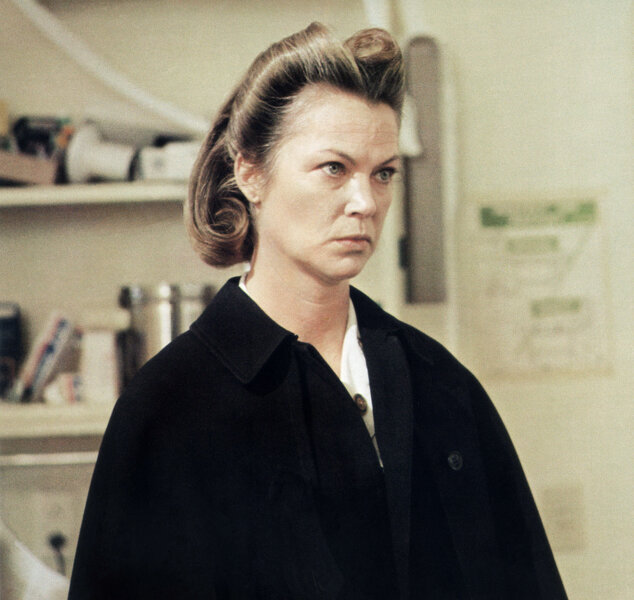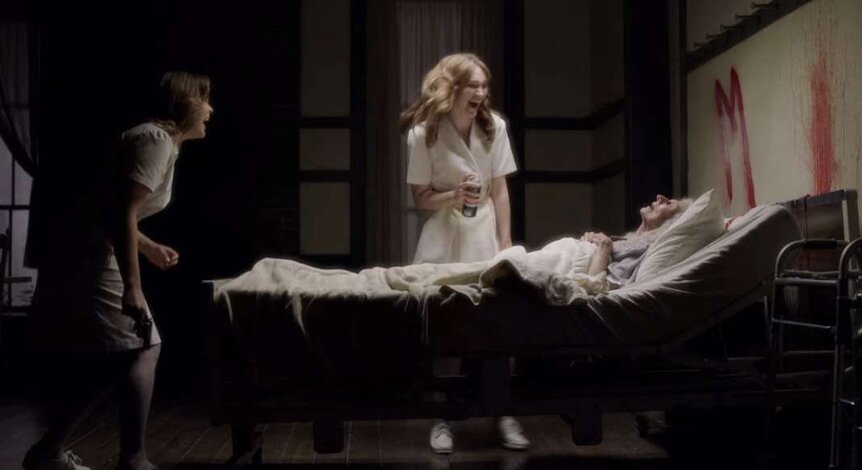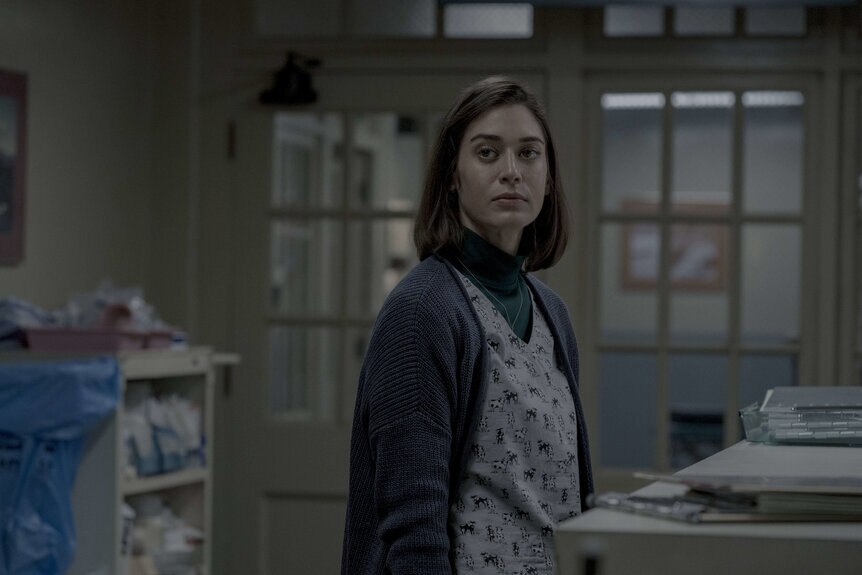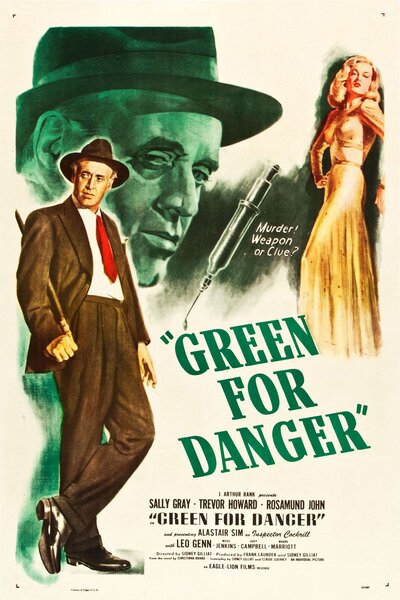Create a free profile to get unlimited access to exclusive videos, sweepstakes, and more!
From Misery to Ratched, the terrifying appeal of nurses in horror
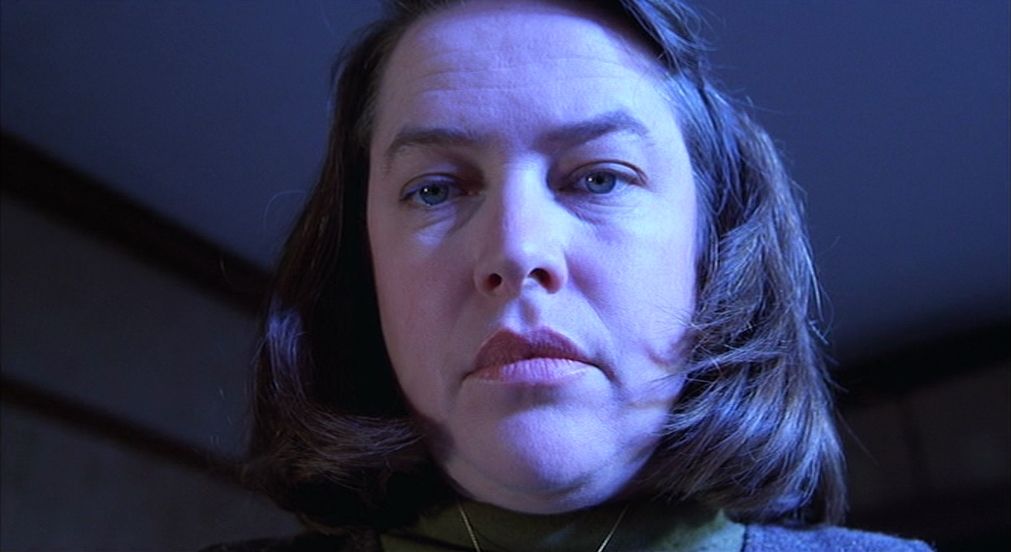
Hospitals can be traumatic for a variety of reasons, which horror cinema and television have utilized to maximum effect over the last 100 years. From slasher movies to psychological thrillers, a medical or psychiatric ward has long set the terrifying scene. Scares abound, and receiving compassionate care from the staff cannot be guaranteed. A nurse performs a variety of tasks that aid recovery, however, this role is often subverted in horror, turning a caregiver into an antagonist. A nightmare figure who also has access to drugs and medical instruments intended to help, which can do just as much damage in the wrong hands. Despite male nurses being common, this role is often portrayed by a woman on screen — particularly if the nurse has a twisted sense of duty.
To celebrate 100 years of American cinema in 2003, the American Film Institute produced a series focusing on various movie staples including a list of 100 iconic heroes and villains. Two women that appear in the Top 20 villains have medical training that is wielded as a tool to exert power — One Flew Over the Cuckoo's Nest's Nurse Ratched (Louise Fletcher) is number five, while Annie Wilkes (Kathy Bates) of Misery fame sits at number 17. Both actresses won an Oscar for their memorable performances of characters that began life in a novel and have recently been given the television origin story treatment. Anthology series Castle Rock is a Stephen King mixtape of sorts, which recently saw Annie take center stage with Lizzy Caplan offering up a more sympathetic take on this character that disposes of the Angel of Mercy archetype and serial killer aspect.
Meanwhile, Sarah Paulson is no stranger to terrifying characters after nearly a decade of American Horror Story roles that has seen her play villain and victim alike. She has some big sensible nurse shoes to fill taking on the titular role in Ryan Murphy's One Flew Over the Cuckoo's Nest prequel. No stranger to dialing up the sinister elements, Ratched has Murphy's signature creepy factor baked into the aesthetic. And while the 1976 Best Picture Academy Award winner is a drama with horrifying elements, Ratched looks set to tap into a heightened world of mid-century mental health treatments. The Netflix series description notes this psychiatric hospital is performing experiments on the patients, which reflects why horror filmmakers are drawn to this controversial era of psychiatry.
In the nature versus nurture debate of an evil character, men such as Michael Myers are born this way, whereas women are typically driven to darkness by an external factor. This theory is back up by the Ratched description, "Mildred's stylish exterior belies a growing darkness that has long been smoldering within, revealing that true monsters are made, not born." Whether passion, ambition or mental illness, the reasons why women become the villain of the story are often rooted in emotion.
The stylized images that have been released so far pump up the color palette — gone are the classic white uniform replaced by an unsettling turquoise. Her yellow skirt suit paired with a matching hat tap into the cautionary value of this shade of canary that genre is fond of. Coupled with the eerie green arsenic hue of the key art further underscores the menace at the heart of this origin story.
Exerting her authority over the asylum patients with zero empathy helps Nurse Ratched land so highly on the AFI villain list. She debases and demoralizes with little regard for the humanity these patients possess. Ruling by fear, she uses dehumanizing tactics and medical procedures such as electroshock therapy — this movie is cited as giving this treatment a bad reputation — and extremes like a lobotomy to establish order and control. There are flashes of Ratched's cruelty in American Horror Story's Sister Jude Martin (Jessica Lange) who rules with an iron fist. Asylum is set in 1964, just one year after the events of One Flew Over the Cuckoo's Nest, which sees the nun using the record player as a method to torment those she is meant to be helping.
Nurses are also referred to as "sister" much like nuns, but this doesn't mean there is any compassion to go with this familial moniker. However, the nuns who double as nurses in Asylum are benevolent in comparison to the nurse siblings in AHS: Roanoke. Just as creepy dead as they are alive, Miranda (Jenna Doolittle) and Bridget Jane (Areana Cirina) were nursing aides who worked in an assisted living facility in Rochester. After they were suspected of having a hand in the death of two patients in 1988, they resigned their positions and fled the state.
Drawn to the ghoulish history of Roanoke House, they set up their own facility with very specific criteria for patient admissions. Turning their diabolical urges into a sinister game to spell out the word "MURDER," each letter represents the first initial of a victim. Sometimes they use poison or suffocation, on other occasions, they opt for a gun, but they are interrupted before they can finish their project. Their artwork cannot be removed and their spirits linger within the walls of this cursed home. Inspired by a pair of killer ex-nursing aides, Roanoke added color to their story. They are the rare female killers that take glee in their crimes without a coded motive laced with revenge, love, or family. Instead, they get their kicks through cruelty, which could be down to a classic case of folie à deux — aka "madness for two."
The Jane sisters are not the only spectral nurses to appear in AHS, but Murder House's Gladys (Celia Finkelstein) and Maria (Rosa Salazar) are victims, not perpetrators. They are student nurses that fell for serial killer R. Franklin's (Jamie Harris) claim of injury, but upon examining him they realize it was a ruse to get inside their home. This is another case of art imitating real life as Franklin's 1968 murders are based on infamous nurse killer Richard Speck.
Motives vary, but the nurse that kills is often doing it due to a so-called act of mercy. This trope is prevalent and suggests this form of "treatment" is a twisted form of still giving care. Annie Wilkes wants nothing more than to look after Paul Sheldon (James Caan) while he recovers from a car accident — one that she caused. She is his "number one fan," which means he gets the personal treatment that leans into torture when he attempts to leave the confines of this room. When he does manage a brief scavenger hunt, he finds the scrapbook detailing her greatest murder hits including the time when she was head maternity nurse and 11 babies died under her care. The case went to trial, but a lack of evidence meant Annie was free to kidnap best-selling authors.
Rather than killing her patients, the Annie of Castle Rock resorts to murder when she is trying to protect her daughter (who is actually her half-sister) from potential predators. Yes, she killed her father in a fit of rage but it was an accident — stabbing her step-mother, on the other hand, was purposeful. This change-up in motives shifts this character away from a killing caregiver cliché that monstrous nurses are often rooted in. The Annie of King's novel and Bates' iconic performance provides a blueprint for an impassioned woman who takes it too far. Dedication that tips into unhealthy fervor underscores her motives because, of course, emotions are the source of this terror.
Emotions cloud judgment, which can lead to impulsive and dangerous acts that are shrouded in the idea of good intentions. The Alienist: Angel of Darkness is the second season of the late 19th-century TNT series exploring early methods of police investigations using an expert who studies the ailing mind. Set in New York City, the second season focused on a baby-kidnapper-turned-killer and the mysterious goings-on at the Lying-In hospital that provides care for unwed mothers — the term "lying-in" is an out-dated term for childbirth.
Care is used in the loosest terms as the patients and nurses are at the mercy of a tyrannical matron who shows little concern for either the staff or those under their care. When it becomes clear that someone at this hospital might be behind the deaths of these babies, several female suspects are presented to the audience as private detective Sara Howard (Dakota Fanning) attempts to find out the who behind this horrific spate of crimes. Eyelids painted on the dead children is an act of memento mori — a Victorian photographic practice to remember the dead — which doubles down on the creepy when the killer uses blood during a later kill to complete this ritual.
The real motive goes beyond hysteria in its most simplistic form but this does fall into the "monsters are made not born" camp that is common for women who kill while wearing the nurse uniform. The added "Angel of Darkness" sub-title informs the audience that this killer will likely be a woman and plays into this notion of a caregiver-gone-wrong a la Annie Wilkes.
Crimes of passion extend to revenge, which is the motive at the heart of the WWII-set thriller Green for Danger that takes place in an operating theater. Killing a patient while surrounded by doctors and other nurses doesn't sound like an ideal plan for a clean getaway. Factoring in the titular color code, the different color gas tanks used during surgery gives the killer a method for vengeance. Playing with the classic whodunnit framework, there are a lot of hysterical women who are suspects and victims in this narrative. There are some clever misdirects that incorporate the various lovestruck motives; furthermore, it lays some early groundwork for the kind of killer nurses we have become accustomed to in the nearly 75 years since its release.
A common thread links the women that kill in slasher movies to most of the nurses discussed here; motives are based on environmental factors, rather than being "born this way." Compassion is replaced with a chilling disregard for the caregiving role. Of course, not all the women featured above are killers and it is yet to be seen how far Ryan Murphy's Ratched will go to become the infamous tyrant or what reason (if any) she will be given to explain her seeming lack of emotion. Nevertheless, it is impossible to ignore the gendered aspects because while this role is undertaken by men and women, in movies and TV the latter are the ones who resort to terrifying acts while their job title suggests otherwise. "Monsters walk among us," Sara Howard intones in The Alienist, reminding the audience that the face of horror can be hidden by any uniform or profession.


